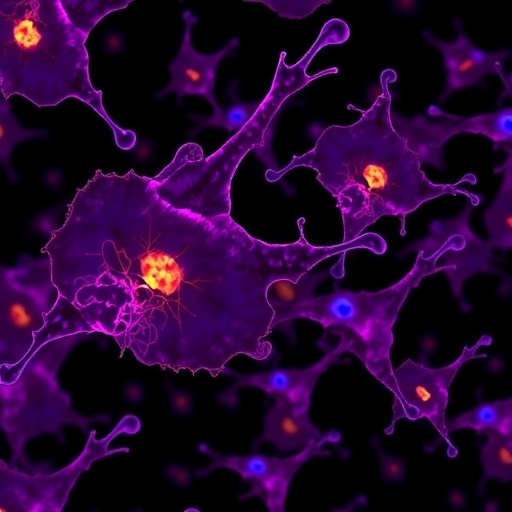Sexual health and victimization heighten based on activity

Credit: Via UnSplash (photo credit: SERGEY-ZOLKIN-192937)
Teens spend hours every day on internet-connected devices, where limitless opportunities to explore sexuality online. These opportunities don’t come without big risks, though. A researcher from Michigan State University found that online sexual experiences can predict whether they become victims of sexual assault one year later.
The findings, published in the Journal of Youth and Adolescence and funded by the National Institutes of Health, are part of a study that is the first of its kind to investigate online sexual experiences using a person-centered approach, which identifies specific patterns of behaviors in sub-groups of people rather than general observations across a large group. This approach allowed researchers to track the girls’ online experiences – and subsequent offline experiences – more intricately than prior studies.
“It makes sense that engaging in risky behavior online would translate to offline risks,” said Megan Maas, research author and MSU assistant professor of human development and family studies at MSU. “But we were able to identify specific online behavioral patterns that correlated with susceptibility to different offline outcomes – which was never captured from conventional approaches before.”
Maas and colleagues assessed data from 296 girls between 14- and 17-years-old, who self-reported their online and offline sexual experiences over five years. Additionally, the girls would visit a lab each year for a trauma interview to measure experiences such as sexual abuse, assault or violence that may go undetected in a survey.
“By assessing the teens’ online sexual experiences using the person-centered approach, we were able to group the teens into four classes of experience patterns, which predicted sexual health and victimization outcomes one year later,” Maas said.
The four classes were:
- Online inclusive: These teens have a high probability of having several online sexual experiences, including looking at internet porn, chatting with strangers about sex, sending nude photos and posing provocatively on social media. This class often has strangers posting sexy comments on their social media accounts, requesting nude photos and soliciting them for sex.
- Seekers: These teens purposefully seek out internet porn, chat with others about sex and post sexy photos on social media, but purposefully do not have a sexy profile picture and do not receive a lot of online attention from others.
- Attractors: This class of teens gets attention from others online, though they’re not explicitly looking for it. They had a sexy social media profile, had people requesting nude photos, received comments about how sexy they are and have strangers solicit them for offline sex.
- Online abstinent: This group had little probability in having online sexual experiences.
The goal was to pinpoint online patterns of sexual experiences related to three offline outcomes one year later: HIV risk, sexual assault and intimate partner violence, Maas said.
They discovered that attractors were more likely to be sexually assaulted than the seekers; online inclusive were likely to be sexually assaulted or engage in risky sex, especially if they’d experienced prior sexual abuse or assault; whereas, the seekers were more likely to have a physically violent romantic partner, especially if they’d experienced prior sexual abuse or assault.
Maas explained that her findings demonstrate how critical it is for teens to receive education to understand how online sexual experiences may shape their offline experiences. Specifically, she hopes that schools and families will educate youth on sexual health and consent as well as healthy relationships, as their online experiences could have serious consequences.
“Rather than trying to tackle the impossible – like eliminating teens’ exposure to porn or ability to sext – we can and should educate them about these realities and risks and offer alternatives for learning about and expressing sexuality,” Maas said.
Maas hopes that her findings will inspire parents to proactively talk to their kids about risks they face online, as well as to establish rules early in their lives that can prevent girls’ from putting too much emphasis on their sexy social media presence.
“The best strategy for parents to follow is to limit time and space for internet usage,” Maas said. “Establish a time limit they can be on a device, and don’t allow screens in bedrooms. There are apps for parents that can help control screen time – and plenty of ways to involve their kids in activities that don’t rely on the internet at all.”
Next, Maas plans to explore why these online experiences predict offline risk and victimization. For instance, if teen girls feel obligated to engage in unwanted sexual activity if they have already sent a nude photo, or if boys feel entitled to sex from girls with sexy social media profiles. She hopes this follow-up study will clarify these findings to provide more specific guidance for sexual health and internet safety programming without attributing blame to survivors.
###
(Note for media: Please include a link to the original paper in online coverage: https:/
Michigan State University has been working to advance the common good in uncommon ways for 160 years. One of the top research universities in the world, MSU focuses its vast resources on creating solutions to some of the world’s most pressing challenges, while providing life-changing opportunities to a diverse and inclusive academic community through more than 200 programs of study in 17 degree-granting colleges.
For MSU news on the Web, go to MSUToday. Follow MSU News on Twitter at twitter.com/MSUnews.
Media Contact
Caroline Brooks
[email protected]
Original Source
https:/
Related Journal Article
http://dx.




